Cucumber "Courage" - a hybrid of the first generation, which has gained popularity for the ability to give a rich harvest, even in adverse weather conditions. Not only according to the description, but also according to the reviews of farmers, it easily tolerates rain and prolonged heat. With proper planting, care from an area of 1 m2, about 18-20 kg of marketable, short-fruited fruits are removed, as in the photo.
Content
Courage F1 ": a biological description
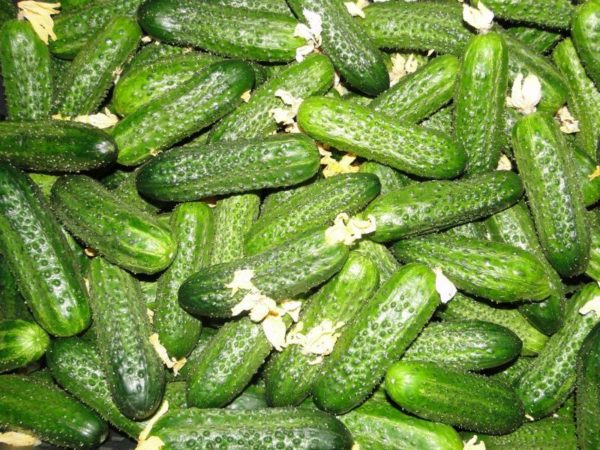
This hybrid is the best development of the Russian agricultural company Gavrish in the field of selection of cucumbers. With its introduction, specialists were able to stabilize productivity due to the bouquet type of ovaries and self-pollination. The latter is very important in rainy conditions, when there are few insects, and in closed ground. The hybrid was included in the State Register of Seeds of the Russian Federation in 2002 and is recommended for cultivation in all regions.
Bushes
Indeterminate plants have unlimited growth of the main stem. The latter has medium branching. Strong shoots cover the leaves of medium-sized green color with irregular-edged edges. Flowering female type. Parthenocarpic hybrid - pollination is not required, which makes "Courage" suitable for growing in closed ground. The type of ovary formation is bundle, in the axils of the leaves.
Fruit
In a hybrid, 2 to 8 green cylinders are formed in one node. The length of the fruit is 14-15 cm, the diameter is about 4.5 cm. The mass of marketable greens is 110-150 g. The peel of the dark green color is covered with “smeared” silver stripes and frequent tubercles. The pubescence is white. Crispy, light flesh with an intense cucumber aroma, subject to the irrigation regime, is devoid of bitterness.
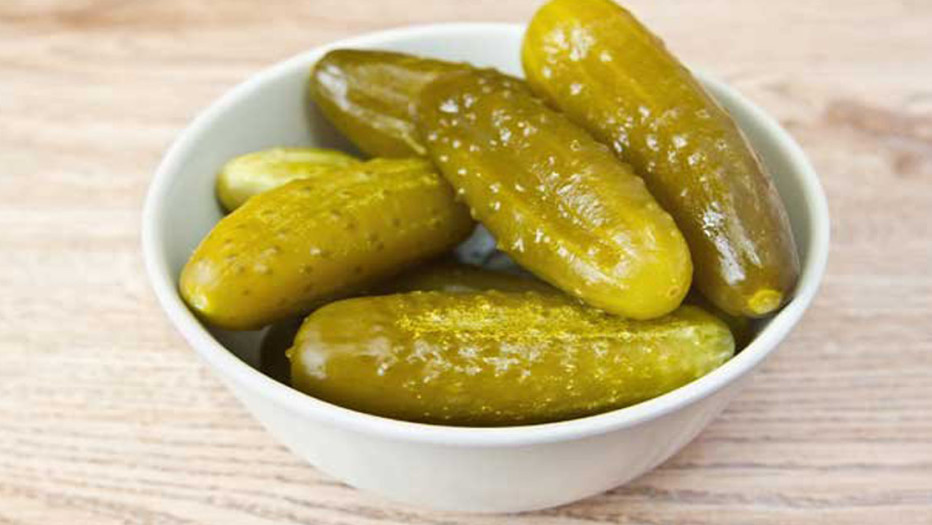 You may be interested in:
You may be interested in:Features and specifications
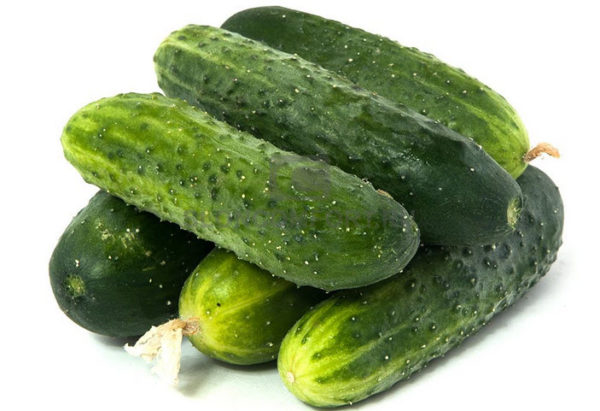
The hybrid of the first generation “Courage” is resistant to adverse conditions. Technical ripeness occurs on the 40th day after the emergence of seedlings or planting seedlings on the beds. The cucumber has good immunity to powdery mildew and root rot. However, in violation of cultivation agrotechnics, vegetable growers note lesions by fusarium, bacteriosis and anthracnose.
Productivity, taste, purpose
The early hybrid is highly productive. From an area of 1 m2 in private households, you can collect about 15-20 kg of marketable greens. With intensive cultivation technology, an indicator of 10 kg belongs to one bush - in greenhouses and large agricultural enterprises, productivity increases to 40-50 kg / m2. “Courage” has a sweet, pleasant taste and strong aroma characteristic of the culture. The purpose of greens is universal: they are suitable for fresh consumption (salads, slices), pickling, preservation.
Advantages and disadvantages
The hybrid is harvested and promising. It has an extensive list of advantages. But some disadvantages are still identified by vegetable growers.
Table. Pros and Cons of the Hybrid
| Benefits | disadvantages |
|
Short growing season |
Need for bush formation due to plant indeterminacy |
|
High marketability, durability and productivity |
|
|
Tolerance to various weather conditions |
The high price of hybrid seeds, which must be purchased annually |
|
Resistance to root rot and powdery mildew |
|
|
Self-pollinating |
The appearance of bitterness in violation of the irrigation regime |
|
Good transport tolerance |
Sowing cucumbers
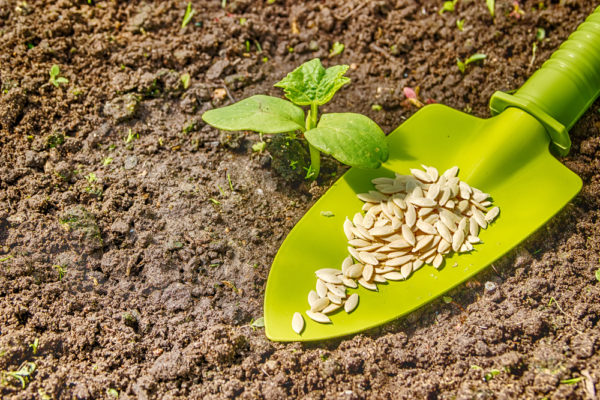
Sowing technology, seed and soil preparation, as well as the correct choice of site affect the quality and quantity of the crop of early cucumbers. It is also important to incorporate the crop into the vegetable crop rotation. The optimal predecessors for the Hybrid hybrid are potatoes, peas, soy, cabbage, mustard. After pumpkin crops, beds should not be placed under cucumbers: there is a high risk of plant damage by specialized harmful organisms.
Site selection and tillage
The site for cucumbers is chosen sunny with shading during the midday heat, when the sun's rays are most active. Soil is prepared in the fall, when 200 g of wood ash, 4 kg of compost, 100 g of nitroammophoska per 1 m2 are distributed on its surface. Then the site is dug up on a bayonet shovel. In the spring after the snow cover has melted, the territory is harrowed, closing up moisture. In the northern regions, the beds are covered with foil so that the earth warms up faster.
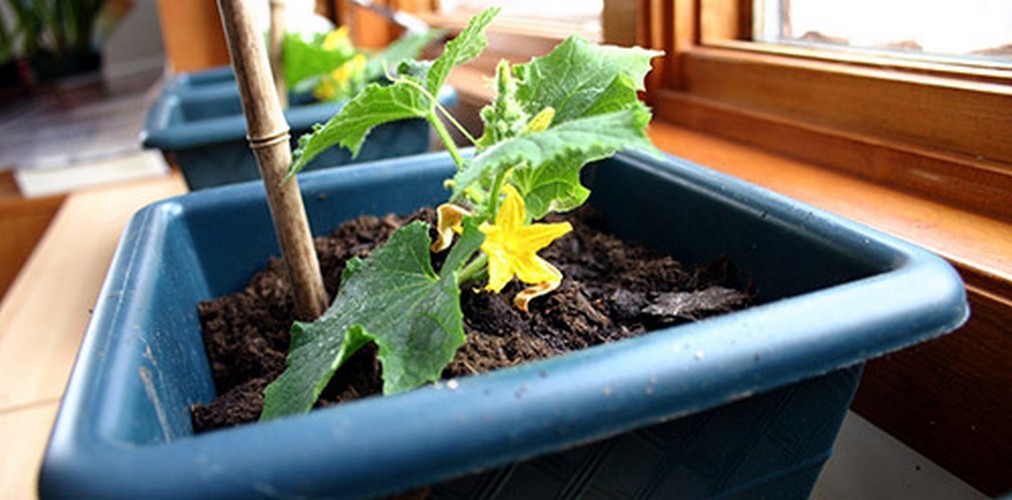 You may be interested in:
You may be interested in:Seed preparation
Buy hybrid seeds at trusted points of sale. To get friendly seedlings, seed should be preliminarily prepared. Main steps:
- Salt disinfection - the seeds in it can withstand about 20 minutes.
- Processing with manganese - soaking in a tool strengthens the immunity of future plants.
- Germination of seeds with boric acid (baking soda) - wrap the seed in a gauze cloth moistened with a solution, make sure that the seed does not dry out before sprouts appear.
Technology and sowing dates
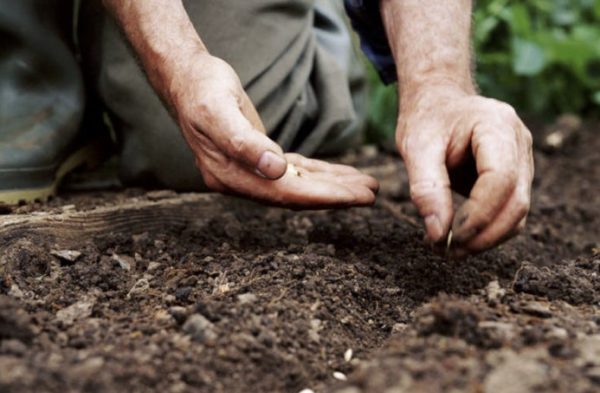
They begin to field work after the soil reaches a temperature of 14 ° C, which occurs at the end of April or beginning of May, depending on the climatic conditions of the cultivation region. Use two methods of landing:
- Horizontal - prepare wells at a distance of 40 cm from each other. Depth 2-3 cm. After the seed (3-4 seeds per recess) is sprinkled with soil, it is watered and covered with a film until sprouts appear. Two weeks later, the seedlings are thinned out, leaving the strongest. The advantage of the reception is the saving of time and energy on the formation of the bush, since the whips spread along the ground.
- Vertical - make grooves with a distance of 1 m between them. Seeds are sown with a distance of 15 cm. After the appearance of sprouts, they are thinned out. The method provides for the organization of trellises, garter plants and their formation.
Crop care
For the full development of plants and the full return of the crop of smooth and tasty fruits, cucumbers must be systematically taken care of. Hybrid “Courage” has its own peculiarities: in order for greens to not get bitter, watering is organized abundant in certain phases of development, when trellis is grown or on special wooden nets a bush is necessarily formed.
Watering
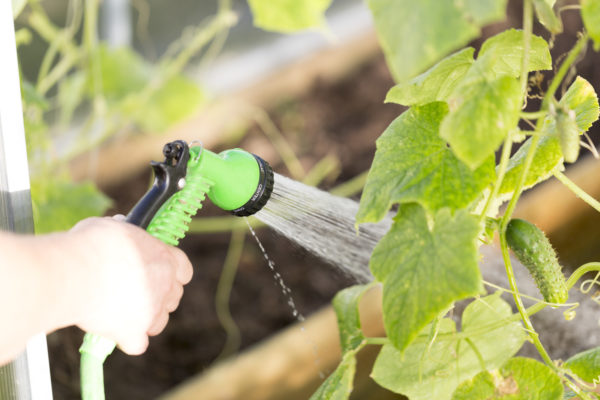
The optimal irrigation system is drip: water enters under the root in a dosed manner. Thanks to this, the soil remains moist throughout the growing season. The rate of formation of an airtight crust is reduced. If it is not possible to organize drip irrigation, water the plants from a watering can, avoiding moisture on the shoots. Water should be settled, not cold.The crop is especially in need of moisture during the flowering and fruiting phases.
Soil treatment
In near-stem circles, good aeration and cleanliness of the beds are maintained by systematically loosening and weeding them. The first soil treatment is carried out after the emergence of seedlings to a depth of 2-3 cm. It is impossible to penetrate deeper into the garden tool, since there is a high risk of injury to the superficial root system. Loosen the soil only after moistening.
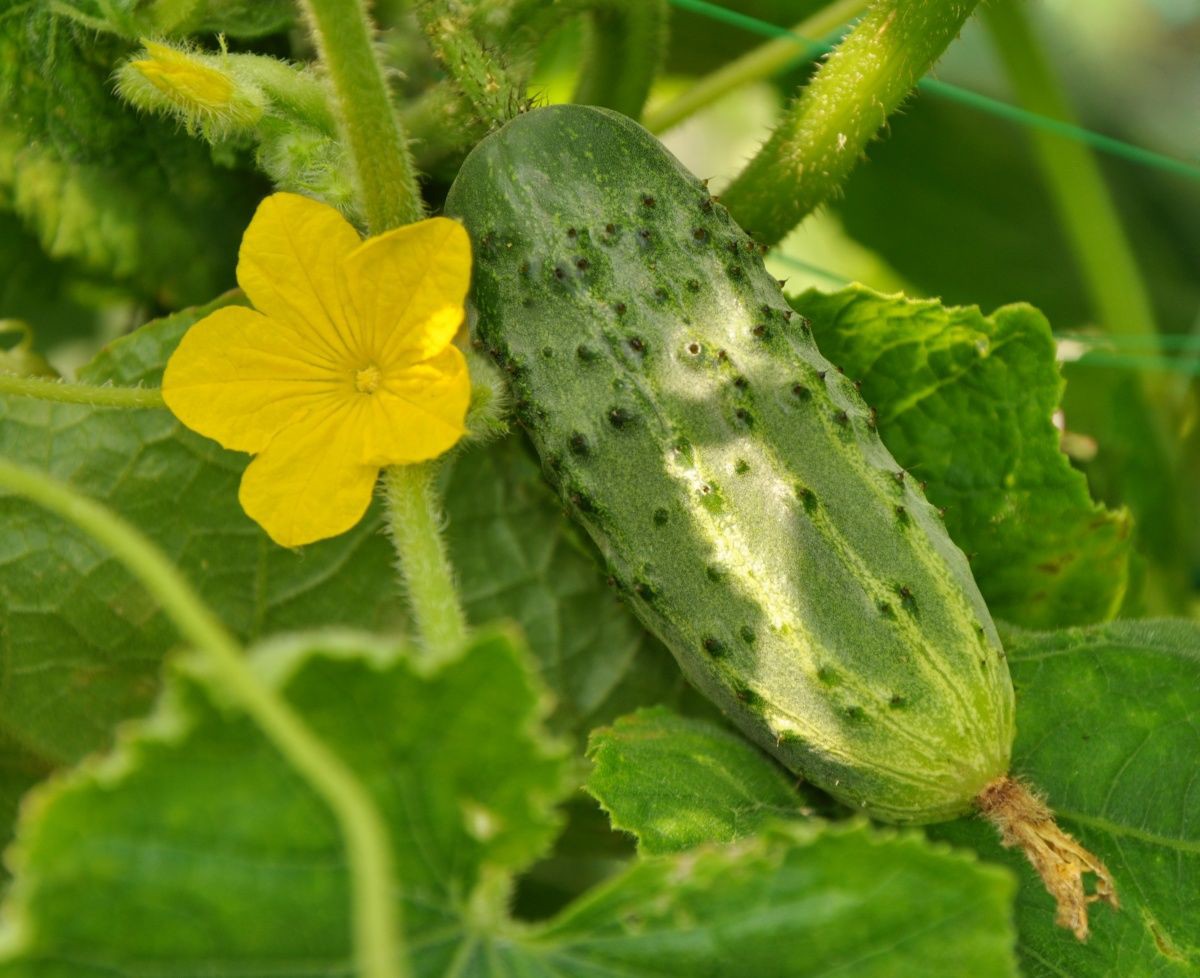 You may be interested in:
You may be interested in:Bush formation
Pinch an indeterminate plant during vertical growth, since its growth is not limited. The first four leaf sinuses "blind." In the subsequent nodules, the ovary is left, and the shoots are removed. In the last three sinuses, all flowers and lateral processes are removed. A tapestry with a height of 2 m is entwined with the main stem, which is nipped at the end twice.
Top dressing
Fertilizing is an important agrotechnical measure providing abundant and long-term fruiting. They feed the soil with macro- and microelements three times during the growing season:
- 14 days after emergence, the plants are fed infusion of mullein from 1 kg of the product and 10 l of water.
- During flowering, superphosphate is added to the trunk circles.
- In the fruiting phase, wood ash rich in phosphorus, potassium and additional trace elements is added to the fertilizing composition.
Protection against diseases and pests
Hybrid Courage is resistant to many harmful organisms. However, when crop rotation and basic care measures are disturbed, the plants weaken. On the shoots of cucumbers, manifestations of fusarium and anthracnose are noted, the development of which is slowed by fungicidal preparations. From aphid attacks, the bushes will secure insecticides. To collect a quality crop, it is better to carry out preventive spraying. Otherwise, development can occur during a period when treatment with effective pesticides can no longer be carried out (after flowering).
Harvesting and Storage
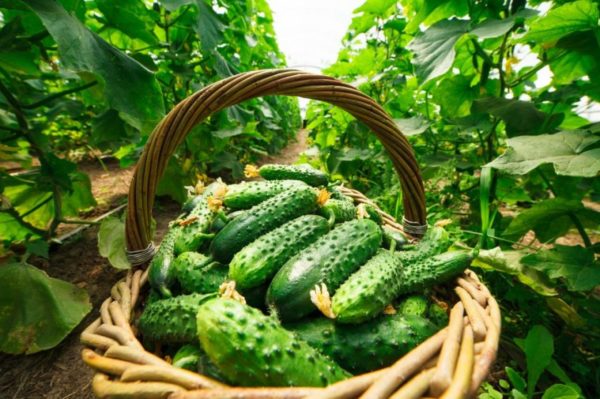
The first greens begin to be removed on the 35-40th day after emergence of seedlings or rooting of seedlings. Harvested in the morning or in the evening, when the sun is not active. Regular removal of the fruit (every other day, and during the period of mass daily) allows prolonging fruiting, as new ovaries are intensively formed in their place. However, if Zelentsy remain in the lash for a short time, they will not outgrow.
Keep the crop for fresh use in the refrigerator. In the department for vegetables, where the temperature is kept within 5-6 ° C, greens keep their healthy qualities for 7-10 days. Most of the crop is used for harvesting, various types of conservation. When grown on an industrial scale, the collected fruits are sent to vegetable storages with a temperature of about 0 ° C and good ventilation, from where they can be transported to stores or processing plants for 20 days.
Reviews
Sergey, 36 years old
I grow cucumbers in a summer cottage for the purpose of further sale. To save space, I chose the vertical cultivation method. Since this hybrid due to lack of moisture can become bitter, organized drip irrigation. Now with standard care measures (top dressing, weeding) I get 25-30 centners per one hundred square meters.
Alina, 32 years old
We bought a private house recently. The neighbor advised in the first year to plant several bushes of different vegetables. Of the cucumbers, she stopped at the Hybrid. Since there is no experience in gardening, I did not count on a large harvest. She did not form bushes, but simply let them go on the ground. I was pleasantly surprised to collect 6-7 kg of smooth, sweet fruits from the bush.
Peter, 62 years old
Due to the intense development of powdery mildew, the harvest of cucumbers of other varieties was affected. Good performance was only in the Hybrid, which showed resistance to the pathogen. Already in the first half of June Zelentsy from the garden used food.
“Courage” is a high-yielding hybrid with high taste and commercial qualities. Great for cultivation both on household plots and on farms, taking into account the organization of the irrigation system in arid regions.

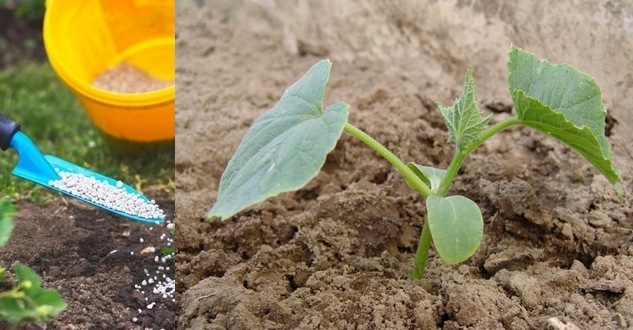
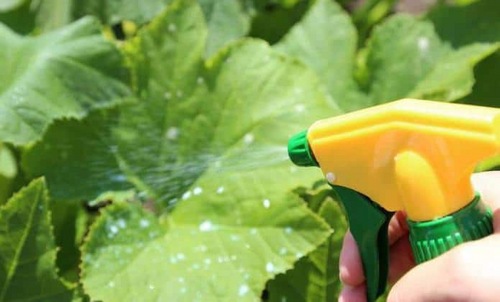
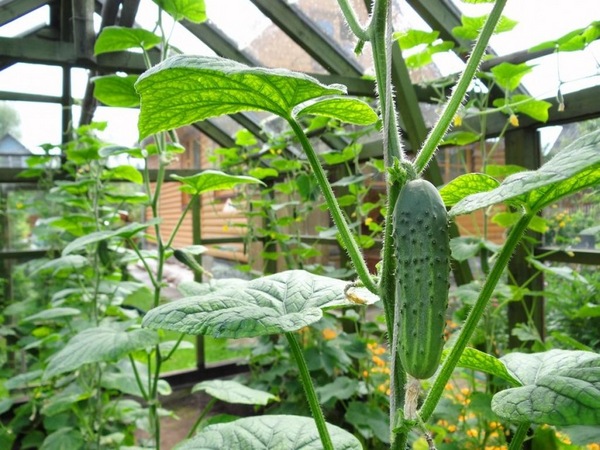
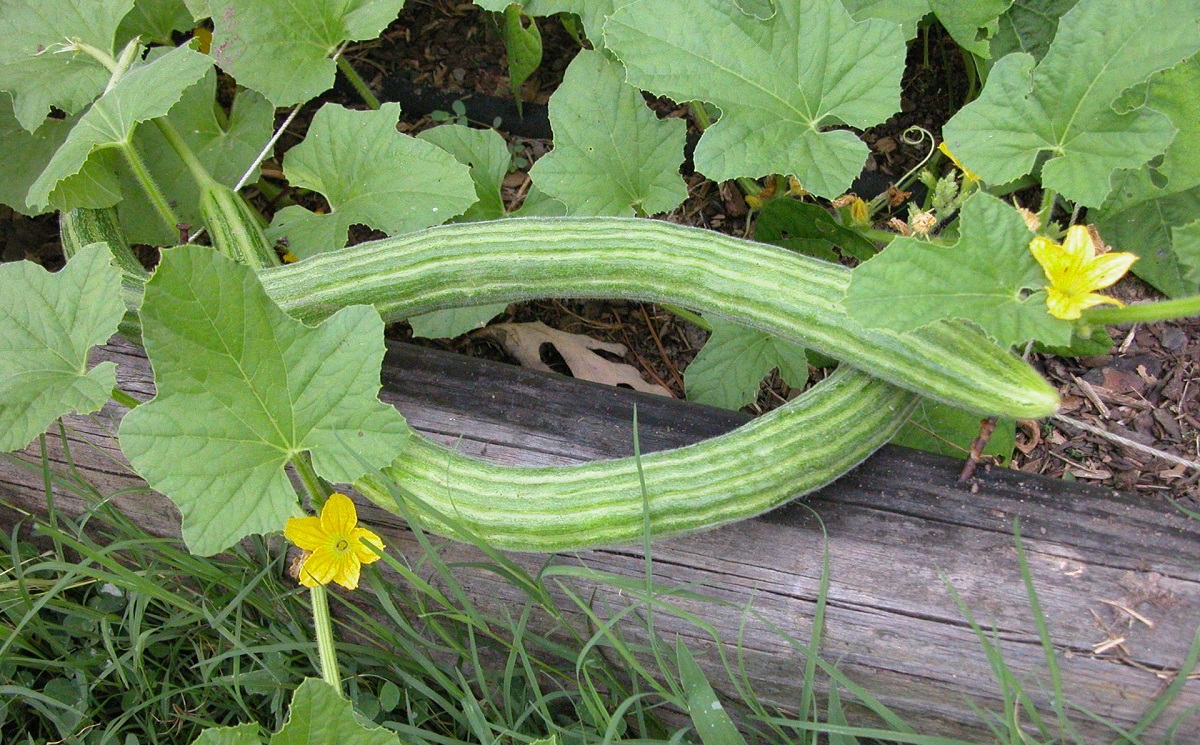 Armenian cucumber with melon flavor: description and characteristics, reviews
Armenian cucumber with melon flavor: description and characteristics, reviews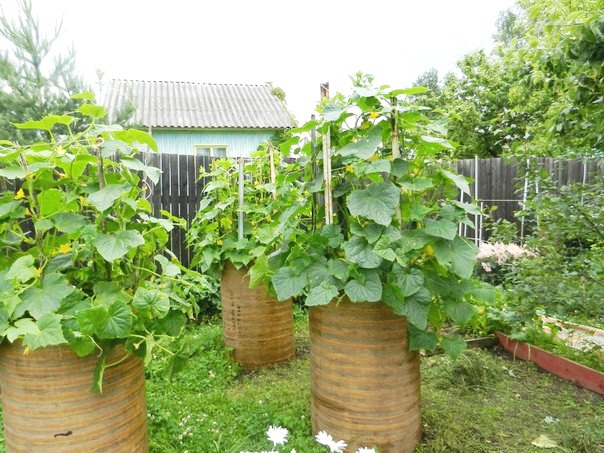 Do-it-yourself vertical beds for cucumbers: schemes, photos
Do-it-yourself vertical beds for cucumbers: schemes, photos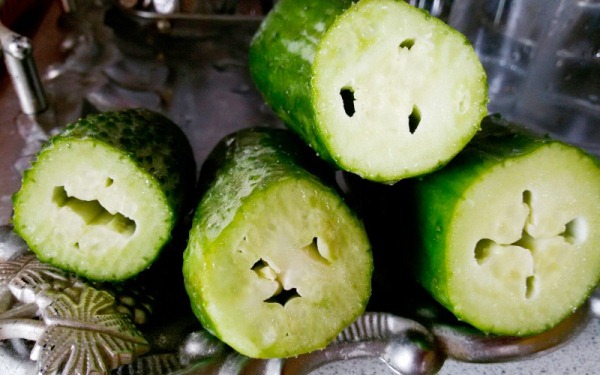 Hollow cucumbers: reasons for the appearance of hollow, what to do
Hollow cucumbers: reasons for the appearance of hollow, what to do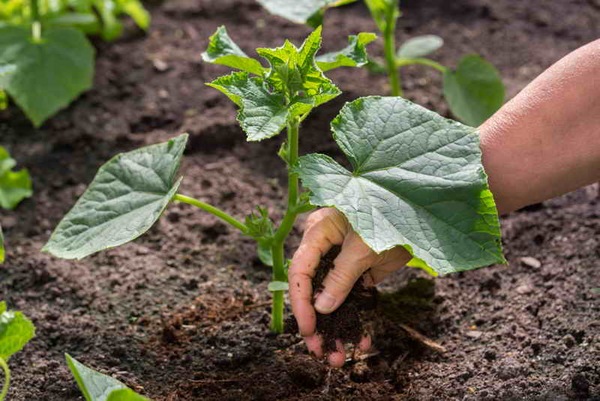 Which manure is best for cucumbers: application, how to breed
Which manure is best for cucumbers: application, how to breed